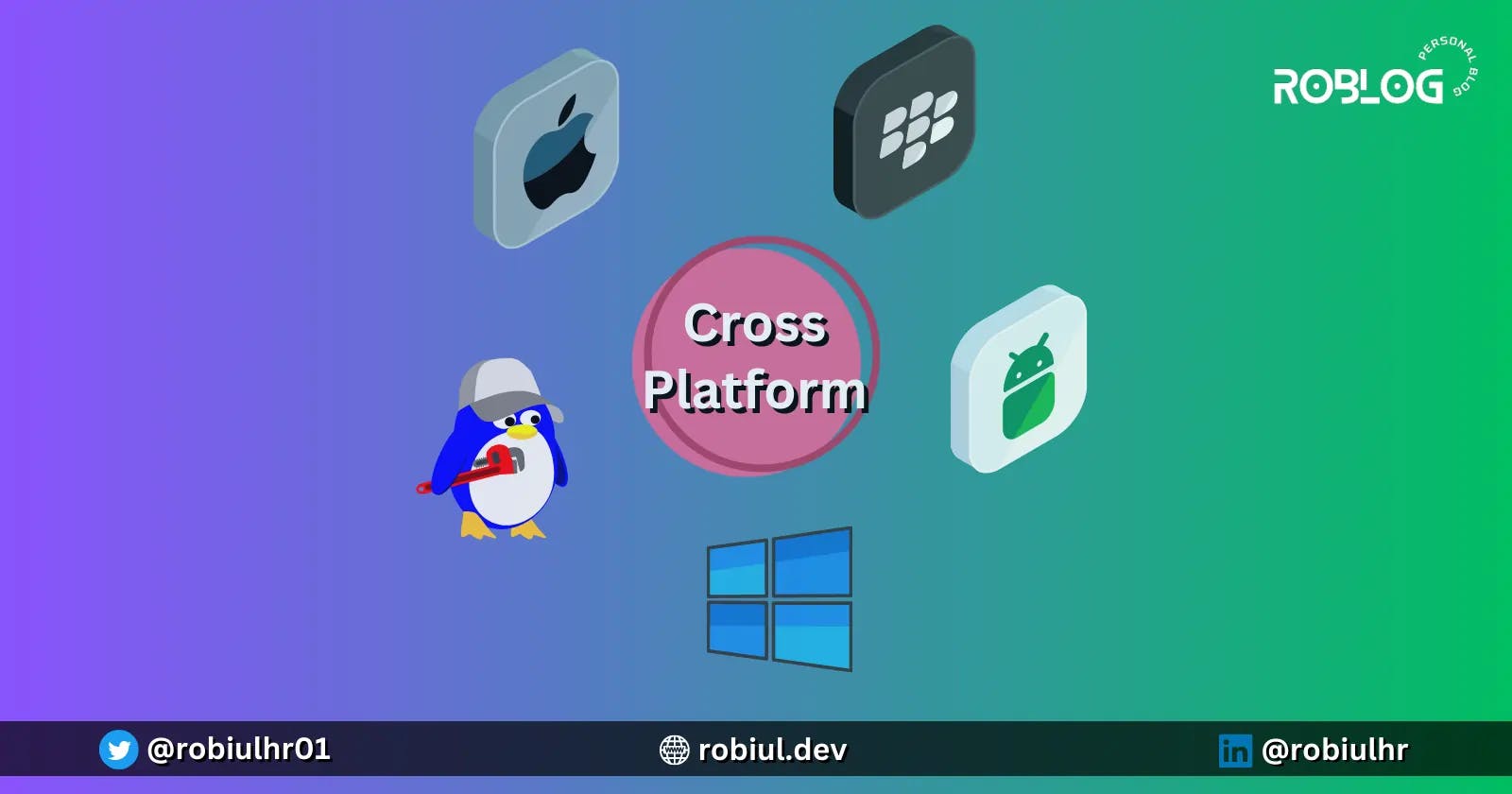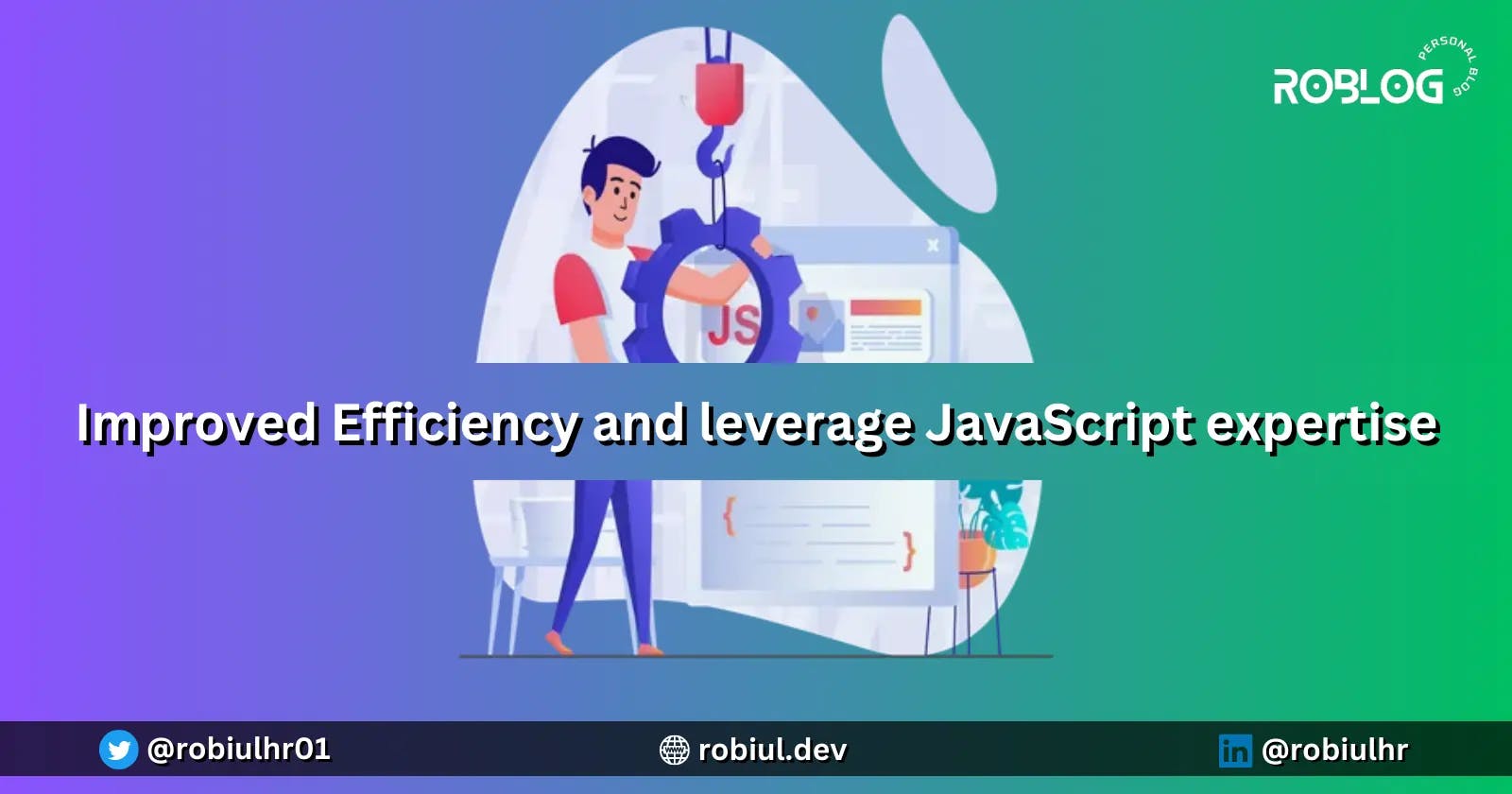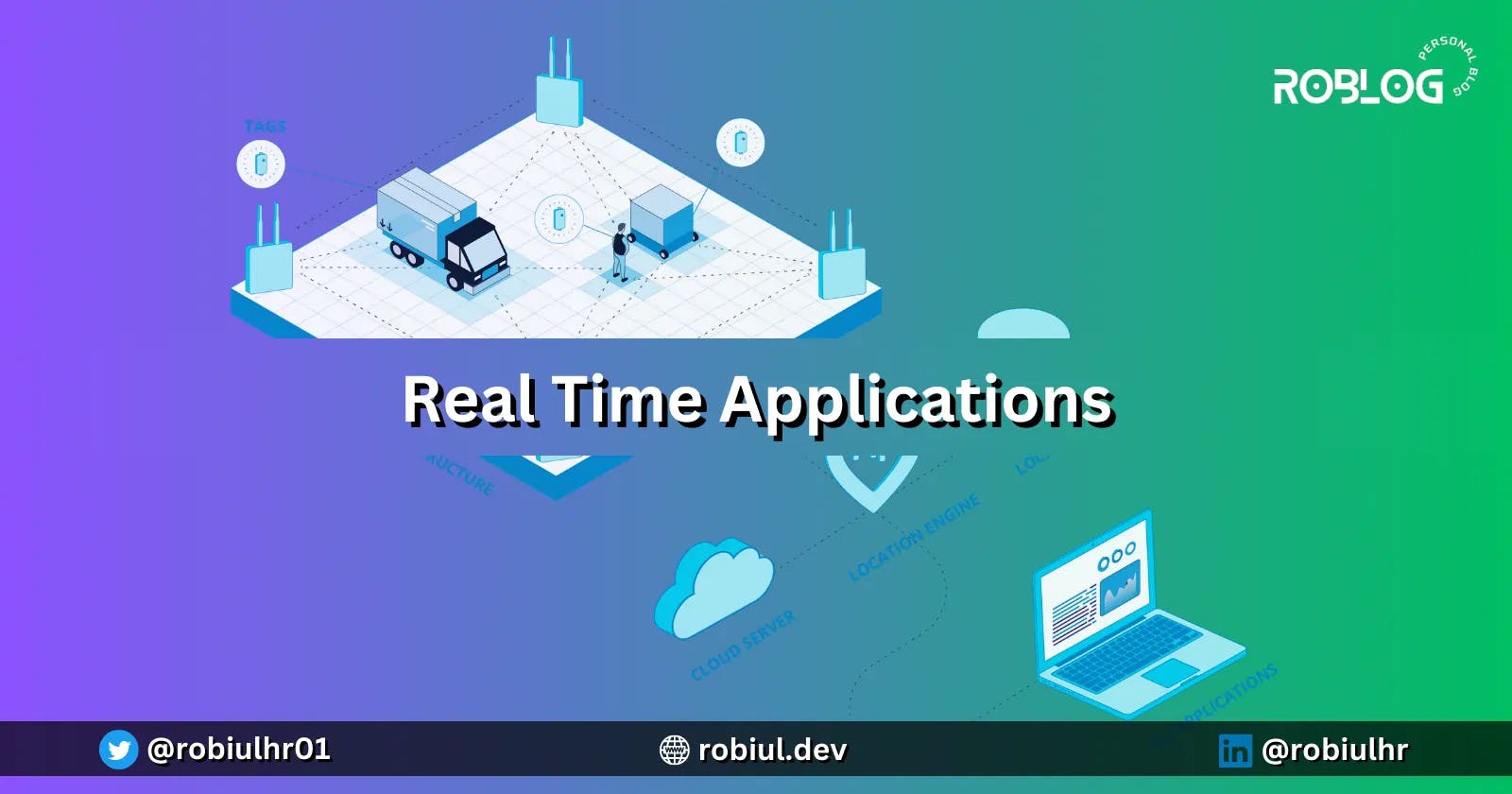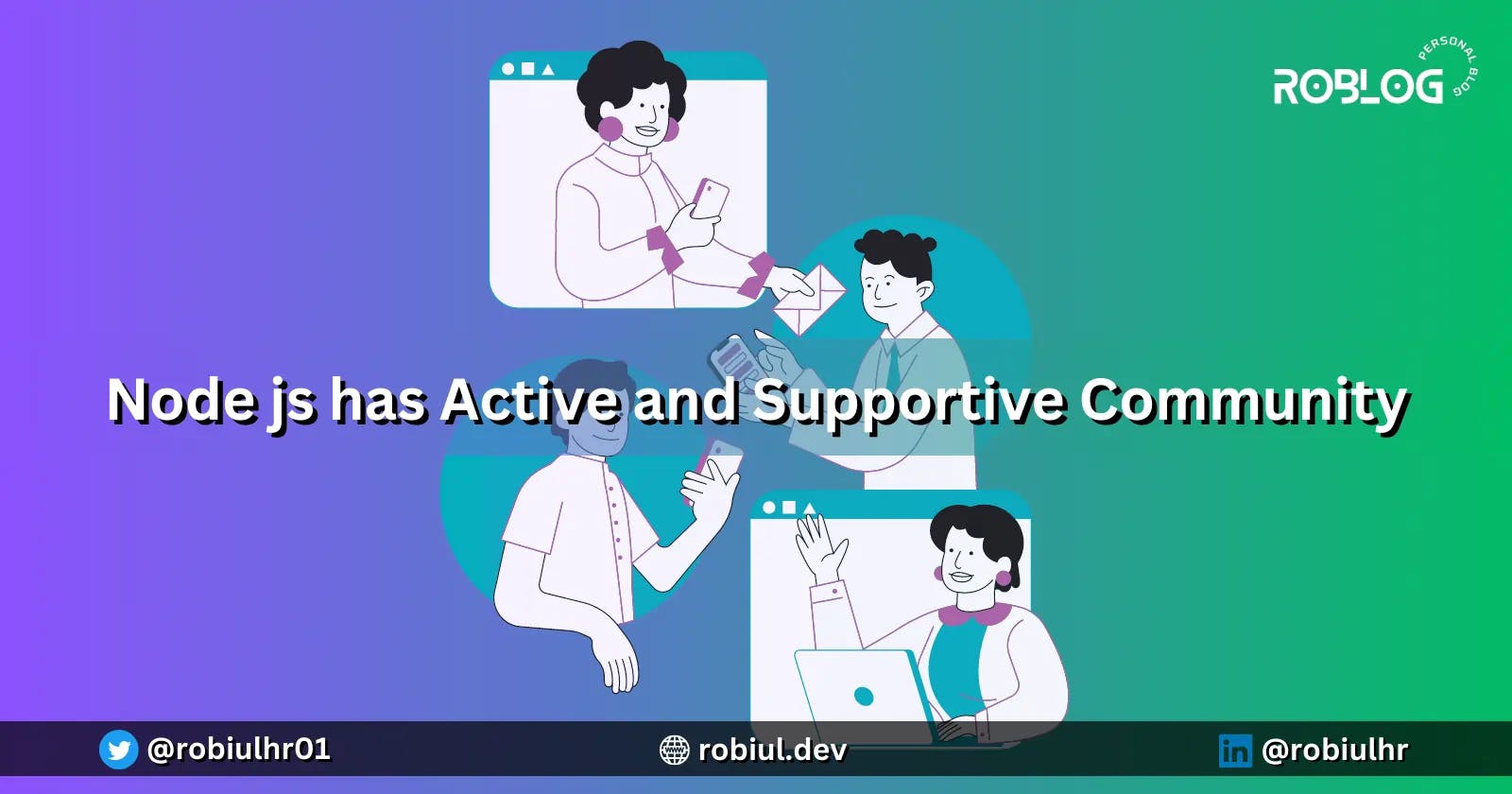What is Node.js Exactly? - Real World Example
Exploring the World of Node.js: Understanding its Features, Benefits, and Functionality
Introduction
Welcome to this article where we will Find out What is Node.js Exactly and will explore the world of Node.js. We often associate JavaScript with making websites interactive and dynamic,
but did you know that it was mainly confined to web browsers?
That's where Node.js comes in. It's like a magical tool that frees JavaScript from its browser boundaries and unlocks its true potential.
In this article, we will take a closer look at how Node.js empowers JavaScript to operate outside the browser and create powerful web applications. we'll explore the features and benefits of Node.js in more detail.
But don't worry, I won't get too technical. My goal is to explain everything in simple terms and use real-life analogies so that everyone, even if you're new to programming, can understand what Node.js is all about and why it's so prevalent in web development.
So, let's dive in and discover the exciting world of Node.js together!
What is Node.js exactly?
You may have come across the definition of Node.js as a JavaScript runtime that runs JavaScript outside the browser. However, this definition can be confusing at first.
Let's break it down into simpler terms.
Think of Node.js as a tool or platform that allows JavaScript to be executed beyond the confines of a web browser. It provides JavaScript with the capability to run on servers, computers, or devices.
In other words, Node.js expands the scope of JavaScript, enabling it to be used for server-side development and other applications outside the browser environment.
Node.js is like breaking the boundaries that restricted JavaScript to a limited area and unleashing its true potential. JavaScript was originally confined to running inside web browsers, limiting its capabilities to enhancing website interactivity.
But with the introduction of Node.js, JavaScript can now operate outside of those boundaries and perform tasks beyond the browser environment.
Let's Understand this using a Real life example:

Imagine you're a chef working in a small restaurant. Your main job is to prepare delicious dishes for the customers.
However, you're only allowed to work within the confines of the restaurant's kitchen, using the ingredients and tools available inside. This limits your ability to source new ingredients from different places or collaborate with other talented chefs.
Now, imagine if someone came along and removed those limitations. Suddenly, you have the freedom to step outside the restaurant, explore different markets to find unique ingredients and connect with other chefs to exchange ideas and techniques.
This newfound freedom allows you to unleash your full potential and create extraordinary culinary experiences.
In this analogy, the restaurant represents the web browser, and you, the chef, represent JavaScript. Introducing Node.js is like stepping out of the restaurant, breaking free from the limitations, and expanding the possibilities of what JavaScript can do.
Node.js has set JavaScript free from the confines of the browser, breaking it out of its cage and unleashing its power for server-side development.

It empowers developers to use JavaScript not just in the browser, but also on servers, enabling them to build powerful web applications, real-time chat apps, data-intensive systems, and more.
Node.js opens up a whole new world of opportunities for JavaScript, making it a versatile and powerful language that can be used across different domains. It revolutionizes web development by providing a platform where JavaScript can flourish beyond the browser and fulfill its true potential.
How Does Node.js Work?
To understand how Node.js works, let's continue with our restaurant analogy. Now that you, as the chef, have stepped outside the restaurant and embraced the newfound freedom, let's see how you can make the most of it.
In the traditional cooking process, you would follow a sequential approach. You would prepare one dish at a time, waiting for each dish to cook before moving on to the next. This sequential process can be time-consuming and inefficient, especially if you have multiple dishes to prepare.
But with Node.js, things work differently. As the liberated chef, you can now multitask and work on multiple dishes simultaneously. You can start preparing one dish while another is already cooking, and perhaps brainstorm new recipes for future creations.

You are no longer bound by a strict sequence; instead, you can efficiently manage your time and resources to accomplish more.
Similarly, Node.js operates on a non-blocking, event-driven model. It can handle multiple tasks concurrently without getting stuck waiting for one task to complete before moving on to the next.
This non-blocking nature allows Node.js to make the most of available resources and deliver high performance.
In technical terms, Node.js uses an event loop, which is like a central dispatcher that listens for events and triggers corresponding actions. It allows Node.js to efficiently handle multiple requests and perform tasks asynchronously.
This means that Node.js can start processing a request, such as fetching data from a database or making an API call, and while waiting for the response, it can handle other requests, ensuring that the server remains responsive and productive.
It can handle a large number of concurrent connections and perform data-intensive operations without compromising performance.
Key Features of Node.js
Node.js comes with a set of powerful features that make it a popular choice for building web applications.

These unique features make Node.js a powerful and popular choice for building scalable, high-performance web applications. By leveraging these capabilities, developers can create efficient, real-time, and data-intensive applications that meet the demands of modern web development.
Let's explore some of its key features:
Asynchronous and Non-Blocking
Node.js follows an asynchronous and non-blocking programming model. This means it can handle multiple tasks simultaneously without waiting for each task to complete before moving on to the next one.
It's like a multitasking magician that can juggle multiple requests and operations efficiently. Let's switch gears to our restaurant analogy.
As we discussed before, in a traditional synchronous model, the chef would have to wait for each dish to finish cooking before starting the next one.
It's like a chef working alone in the kitchen, carefully monitoring each dish as it cooks, and only moving on to the next one once the previous dish is done.

But with Node.js, it's like having a highly skilled chef who can multitask effortlessly.
Imagine the chef utilizing specialized tools and equipment that handle time-consuming tasks like cooking the food.
While the food is simmering on the stove or baking in the oven, the chef can efficiently work on preparing other dishes simultaneously.
This parallel processing capability of Node.js frees the chef from the constraints of waiting for each dish to finish cooking before starting the next one.
It's like having an assistant chef or an automated cooking system that takes care of the time-consuming tasks, allowing the chef to focus on other aspects of food preparation.
The analogy of a chef using tools or automated systems to handle time-consuming tasks in the kitchen represents how Node.js leverages non-blocking I/O and event-driven architecture to maximize efficiency in web development.
By efficiently managing resources and handling multiple tasks concurrently, Node.js enables faster and more responsive applications, enhancing the overall user experience.
Event Driven Architecture
Node.js utilizes an event-driven architecture, which means it listens for events and responds to them asynchronously. Events can be triggered by various actions, such as user interactions, network requests, or file system operations.
When an event occurs, Node.js responds by executing the associated callback function, allowing the application to continue handling other tasks in the meantime.
In Restaurant Analogy, It's like running a bustling restaurant with a highly skilled chef and a set of specialized tools and equipment.
In this scenario, Node.js acts as the chef, utilizing specialized tools and equipment that handle time-consuming tasks like cooking food. These tools not only assist in the cooking process but also have the ability to notify the chef when a specific task is completed.

Just like the chef relies on these tools, Node.js leverages an event loop that acts as the notification system. When Node.js initiates a task, it registers an event and continues to process other tasks without waiting.
Meanwhile, the event loop keeps an eye on these tasks and alerts Node.js when a specific task is finished, just like the specialized tools notify the chef.
This event-driven approach of Node.js allows it to efficiently handle numerous requests and operations simultaneously, similar to how the chef can multitask with the help of specialized tools. It frees Node.js from the constraints of waiting for each task to finish before moving on to the next one, resulting in faster response times and improved performance.
Single-Threaded Event Loop
In the world of web development, Node.js stands out with its single-threaded event loop architecture. This unique approach allows Node.js to handle concurrent requests efficiently, providing excellent performance and scalability.
Let's delve into this architecture using our restaurant analogy.
Imagine your restaurant has a talented and efficient chef who can effortlessly manage multiple orders. Instead of hiring additional chefs for each order, your chef excels at prioritizing tasks, delegating responsibilities, and ensuring the smooth progress of each order.
Similarly, Node.js maximizes resource utilization by efficiently handling multiple requests within a single thread.
Node.js's single-threaded event loop architecture eliminates the need for spawning multiple threads for each request, reducing memory consumption and eliminating the overhead of context switching.
It's like having your chef expertly juggling different orders in the kitchen, without the need for additional chefs.
Remember we discussed the event loop notifying when a specific task gets finished in a previous section?
Now, let's explore how this process happens.
When a request or operation is initiated, it is placed in a task queue, waiting to be processed. The event loop continuously checks this task queue and retrieves tasks one by one for execution.
As the event loop retrieves a task from the queue, it executes the associated callback function, which may involve performing I/O operations, accessing databases, or processing data. While waiting for these operations to complete, the event loop doesn't block and continues to check for new tasks in the queue.
Once an asynchronous operation is finished, the associated callback function is placed in the event loop's callback queue. In the next iteration of the event loop, these callback functions are retrieved from the callback queue and executed.
This mechanism ensures that tasks are executed in the order they were added to the queue, maintaining the integrity of the application's logic.
This event-driven approach not only allows Node.js to efficiently manage concurrent tasks but also provides a way for the event loop to notify when a specific task finishes. When a callback function is placed in the callback queue, the event loop detects its presence and initiates its execution.
It's like your chef receiving a notification when a specific dish finishes cooking, prompting them to proceed with the next steps of food preparation.

By utilizing this architecture, Node.js optimizes performance and ensures responsiveness. The event loop, like your chef's management skills, efficiently schedules considering priority and executes tasks, allowing Node.js to handle a large number of concurrent requests seamlessly.
Cross Platform Compatibility
Node.js is built to run on multiple platforms, ensuring compatibility across different operating systems such as Windows, macOS, and Linux.

This cross-platform support enables developers to create applications that can seamlessly run on various environments.
Imagine having a versatile restaurant that can cater to customers from different locations and backgrounds. Regardless of whether your customers prefer different cuisines or have diverse dietary preferences, your restaurant is adaptable and capable of meeting their needs.
Similarly, Node.js's cross-platform compatibility allows developers to reach a wider audience and ensure their applications can be deployed and used across different operating systems.
Node.js's ability to run consistently across platforms simplifies development, deployment, and maintenance efforts, as developers can focus on building the application logic without worrying about the underlying operating system.
It provides a unified environment for developers to create robust and reliable applications that can be deployed seamlessly on various platforms.
With Node.js's cross-platform compatibility, developers can leverage its power and flexibility to build applications that can reach users across different devices and operating systems, expanding their potential user base and enhancing the accessibility of their software solutions.
Extensive Module Library (npm)
Node.js comes with a powerful module library called npm (Node Package Manager), offering a vast collection of pre-built modules and packages.

These modules cover a wide range of functionalities and can be seamlessly integrated into Node.js applications, saving developers valuable time and effort.
Imagine having a comprehensive recipe book in your restaurant kitchen, filled with a diverse selection of recipes for various specialties and techniques. This recipe book serves as a valuable resource, allowing you to enhance your culinary creations and experiment with new flavors.
In a similar manner, the npm module library empowers developers by providing a rich repository of ready-to-use modules that can be incorporated into their Node.js applications.
With npm, developers can easily search for and install modules tailored to their specific needs, whether it's for database connectivity, web frameworks, authentication, data processing, or any other functionality required for their application.
These modules have been developed and shared by a thriving community of developers, ensuring their reliability and usefulness.
By leveraging the npm module library, developers can significantly expedite the development process, as they don't have to reinvent the wheel for every functionality they require. They can rely on the existing modules, benefiting from the expertise and contributions of the wider Node.js community.
Furthermore, npm provides version management, allowing developers to easily update or switch between different module versions to meet the evolving needs of their applications. This ensures compatibility and provides a streamlined workflow for maintaining and managing dependencies.
Benefits of Node.js
Node.js offers several compelling benefits that make it a preferred choice for web development.

Let's explore some of the key Benefits of using Node.js:
Improved Efficiency and leverage JavaScript expertise
Node.js offers enhanced development efficiency and leverages JavaScript expertise. It streamlines the development process by enabling developers to utilize JavaScript on both the client and server sides of a web application.

This unified language approach eliminates the need to switch between different programming languages or frameworks, improving overall efficiency.
Just like a versatile set of tools in a restaurant kitchen that can handle various cooking techniques, Node.js empowers developers to work more efficiently and effectively.
By leveraging the same JavaScript language for both client-side and server-side development tasks, Node.js simplifies the development process. Developers can write code using JavaScript for the front-end user interface and back-end server logic, leveraging their existing JavaScript skills.
This unified approach reduces the learning curve and allows developers to reuse code, shared libraries, and their JavaScript knowledge across the entire application.
With Node.js, developers seamlessly transition between client-side and server-side programming, accessing a consistent set of tools, libraries, and frameworks. This eliminates the need to learn a new language or framework for server-side development, saving time and effort.
It's like having an experienced chef in a restaurant who is already familiar with the tools and techniques, making the introduction of new dishes or menu expansion easier and more efficient.
Furthermore, The ability to leverage existing JavaScript skills and reuse code not only reduces the learning curve but also increases productivity. Developers can quickly build upon their existing knowledge and focus on learning the specific features and capabilities of Node.js.
It's similar to experienced chefs who can adapt to new recipes and techniques effortlessly, allowing the introduction of a wider variety of delicious dishes to customers.
With Node.js and its compatibility with JavaScript, developers can leverage their existing skills and knowledge to build efficient and scalable server-side applications.
This combination of enhanced development efficiency and JavaScript expertise empowers developers to streamline the development process, deliver high-quality web applications, and create exceptional digital experiences for users.
Node js Provides Enhanced Performance
Node.js is renowned for its exceptional performance and scalability. Its event-driven, non-blocking I/O model enables it to handle numerous concurrent connections efficiently, minimizing resource wastage.
This results in accelerated response times, enhanced throughput, and superior overall performance.

Imagine having an efficient system in your restaurant that can handle a large number of customers swiftly and seamlessly. Every order is processed promptly, ensuring that all customers receive their meals without enduring lengthy waiting times.
This efficiency optimizes customer satisfaction and allows your restaurant to serve a greater volume of patrons. Similarly, Node.js excels at managing multiple concurrent connections without blocking or slowing down the application. Its event-driven architecture listens for events and responds to them asynchronously.
This means that while one connection is waiting for a response, Node.js can swiftly move on to handle other incoming requests. It's like having a team of highly skilled and dedicated staff members in your restaurant who work diligently to fulfill customer orders without any delays.
By efficiently handling concurrent connections and events, Node.js maximizes resource utilization and ensures that your application remains highly responsive.
This is especially crucial in scenarios where real-time interactions or data-intensive operations are involved.
Node.js's performance capabilities make it an ideal choice for building scalable applications that can effortlessly handle a large number of users or process significant amounts of data.
Real Time Applications
Node.js is exceptionally well-suited for developing real-time applications, ranging from interactive menus to collaborative order tracking systems. Its event-driven architecture and built-in support for WebSockets facilitate seamless communication and instantaneous updates between clients and servers.
Imagine a system in your restaurant where customers can place their orders and receive live updates as their orders are prepared and served. Node.js enables a similar experience in the digital realm.
It's like having a dynamic platform in your restaurant where customers can interact with your staff, provide instructions, and receive real-time updates on their orders.
With Node.js, you can establish persistent connections between clients and servers, enabling bidirectional communication. This means that data can be sent and received instantly, allowing for real-time collaboration and interaction.
It's like having a dedicated communication channel between your restaurant and your customers, ensuring a smooth and interactive dining experience.
The event-driven nature of Node.js plays a crucial role in enabling real-time functionality. When a client initiates an action, such as placing an order or requesting a menu update, Node.js responds promptly by triggering the appropriate event and delivering the corresponding updates to all relevant clients.

It's like having an attentive team in your restaurant who immediately responds to customer requests and ensures that everyone stays informed about the progress of their orders.
Additionally, Node.js provides native support for WebSockets, a communication protocol that enables persistent, full-duplex communication between clients and servers over a single connection.
This allows for efficient and low-latency data transmission, facilitating real-time updates without the need for frequent refreshing. It's like having a streamlined and efficient order management system in your restaurant that keeps customers updated in real time.
Whether you're building a reservation system where customers can book tables and receive instant confirmations or a collaborative tool where multiple users can contribute to a shared menu in real time, Node.js empowers you to create highly interactive and responsive experiences.
It's like having a cutting-edge digital infrastructure in your restaurant that enables seamless communication and collaboration among customers and staff.
Node js Provides Scalability
Node.js's ability to handle a large number of concurrent connections makes it highly scalable. It excels at efficiently managing resources and leveraging asynchronous operations, allowing it to handle increased workloads without compromising performance.

Imagine a bustling restaurant during peak hours, where numerous customers place their orders simultaneously. Node.js enables similar scalability in the digital realm.
It's like having a flexible and expandable system in your restaurant that can seamlessly accommodate a growing number of customers and ensure that everyone is served promptly.
The non-blocking, event-driven architecture of Node.js is One of the key strengths which we discussed earlier section.
With this architecture, Node.js can effectively manage a large number of concurrent connections. It avoids the bottleneck of traditional blocking I/O, where each operation would need to wait for the previous one to complete, by allowing operations to be executed concurrently and independently.
Node.js optimizes resource utilization by employing the single-threaded event loop architecture. Instead of spawning a new thread for each connection, it leverages a single thread to handle multiple connections, reducing memory consumption and eliminating the overhead of context switching.
The scalability of Node.js is also enhanced by its ecosystem of modules and tools specifically designed for building scalable applications. These modules provide features like clustering, load balancing, and distributed computing, enabling you to scale your application across multiple processes or even multiple servers.
It's like having a network of interconnected restaurants that collaborate to meet the demands of a large number of customers.
Whether you're running a small restaurant with a few tables or a large establishment with high customer traffic, Node.js empowers you to scale your digital infrastructure to match the needs of your business.
It's like having a responsive and adaptable system in your restaurant that grows with your customer base and ensures a seamless dining experience for everyone.
Node js has Active and Supportive Community
Node.js benefits from a vibrant and active community of developers who contribute to its growth and offer valuable resources, tutorials, and support.

This community acts as a valuable asset, providing a wealth of knowledge and expertise that makes it easier to learn and troubleshoot Node.js applications.
Imagine having a group of experienced chefs in your restaurant who are always there to offer guidance and share their expertise. They can help you improve your recipes, suggest new techniques, and troubleshoot any challenges you may encounter.
Similarly, the Node.js community serves as a supportive and knowledgeable group of individuals who are passionate about the technology and eager to help others succeed.
The Node.js community has created an extensive range of resources, including documentation, tutorials, forums, and online communities. These resources serve as a valuable knowledge base, helping developers learn Node.js and discover best practices.
It's like having access to a comprehensive library of cookbooks, recipe collections, and forums where you can exchange ideas with other chefs.
Furthermore, the community actively contributes to the development of Node.js by creating and maintaining open-source modules and libraries. These modules can be easily integrated into your projects, saving development time and effort.
It's like having a network of talented chefs who share their innovative recipes and techniques with you, allowing you to enhance your restaurant's offerings without starting from scratch.
The collaborative nature of the Node.js community also ensures that the technology stays up to date with the latest trends and developments. The community actively discusses new features, shares insights, and provides feedback, leading to continuous improvements in Node.js.
It's like being part of a culinary association or guild, where chefs come together to exchange ideas, learn from each other, and push the boundaries of their craft.
Conclusion
In conclusion, Node.js is a game-changer in web development. It allows JavaScript to break free from web browsers and enables the creation of dynamic and interactive web applications.
Just like a restaurant empowers its chef with freedom, Node.js gives JavaScript more freedom to do things it couldn't do before. It simplifies development by using a single language, JavaScript, for both the client and server sides.
Node.js excels at handling multiple tasks simultaneously, making applications highly scalable. It also benefits from a vast library of pre-built modules, saving developers time and effort.
Node.js has revolutionized the way JavaScript operates, making the web more dynamic and flavorful. It's a popular choice for building modern web applications.
So, next time you dine at a restaurant, remember how Node.js has empowered JavaScript to venture beyond its traditional confines, making the web a more exciting place.

